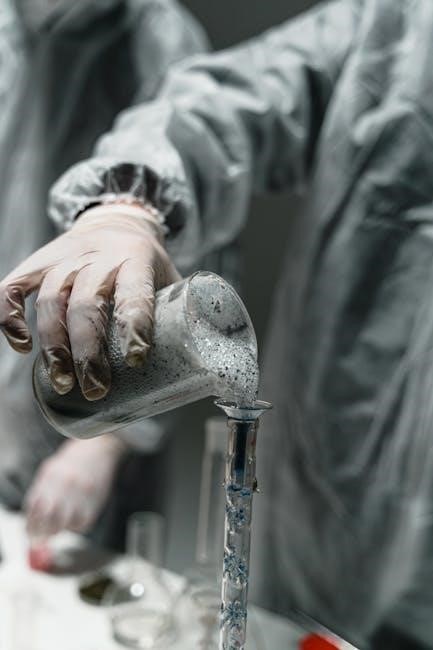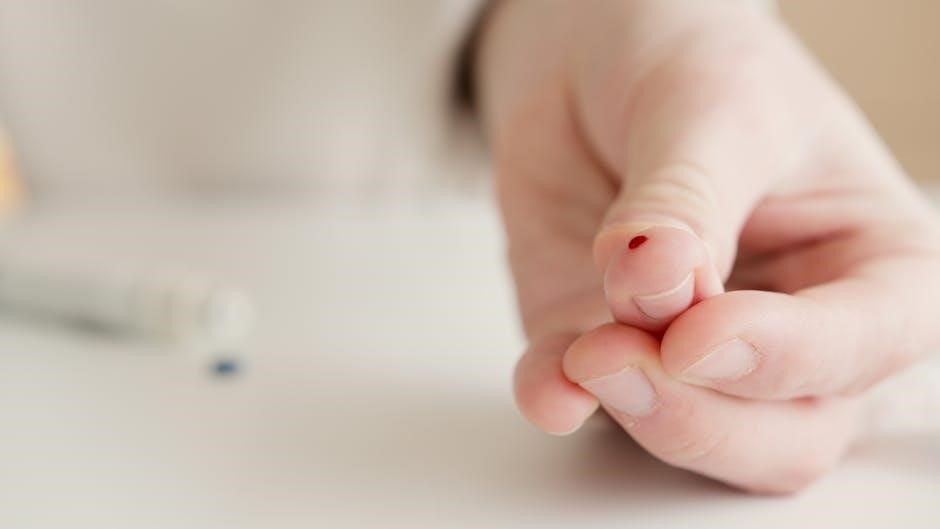Needle Stick Injury Protocol: A Comprehensive Guide
This guide provides step-by-step instructions following potential exposure to blood-borne viruses after a needle-stick or sharp object injury. Preventing these injuries with safety syringes featuring sharps injury protection (SIP) is paramount‚ as needle stick injuries pose significant risks of infection.
Needle stick injuries (NSIs) are accidental skin punctures caused by needles‚ posing hazards to those working with hypodermic syringes and other sharps. These injuries are common healthcare-related incidents‚ potentially leading to blood-borne infections like HIV‚ Hepatitis B‚ and Hepatitis C. Despite the risks‚ a significant proportion of NSIs go unreported‚ highlighting the need for increased awareness and adherence to safety protocols.

NSIs commonly occur in patient wards‚ operating rooms‚ and recovery areas‚ often during injections or suturing‚ particularly with hollow-bore needles. The repercussions of NSIs emphasize the importance of preventative measures‚ including the use of safety syringes with sharps injury protection (SIP) features‚ as recommended by the World Health Organization (WHO). Furthermore‚ proper management and reporting protocols are crucial in mitigating potential health consequences following exposure.
While the risk of infection after an NSI exists‚ prompt action and appropriate post-exposure management can significantly reduce the likelihood of transmission. Understanding the risks‚ implementing preventive strategies‚ and adhering to established protocols are essential for protecting healthcare workers from the dangers associated with needle stick injuries.
Immediate Actions After a Needle Stick Injury
Following a needle stick injury‚ immediate action is crucial to minimize the risk of infection. The first step is to immediately stop what you are doing to prevent further injury or contamination. Allow the wound to bleed freely; gently squeeze the area‚ but avoid sucking on the wound.
Next‚ thoroughly wash the affected area with soap and water. Do not scrub the area vigorously‚ as this can cause further tissue damage. Rinse mucous membranes‚ such as the mouth‚ nose‚ or eyes‚ with copious amounts of warm water or saline solution. Treat the wound appropriately‚ which may involve applying a sterile dressing.
After addressing the immediate wound care‚ it is imperative to report the exposure incident promptly. This reporting process typically involves notifying a supervisor or designated personnel within the healthcare facility. Reporting the incident allows for proper documentation‚ risk assessment‚ and initiation of necessary medical evaluations and follow-up care. Time is of the essence‚ and delayed reporting can hinder timely intervention and potentially increase the risk of infection.
Washing and Disinfecting the Wound
Thoroughly washing and disinfecting the wound after a needle stick injury is a critical step in minimizing the risk of infection. After the initial step of allowing the wound to bleed freely‚ the focus shifts to cleansing the area with soap and water. Use a mild‚ non-abrasive soap to avoid irritating the skin. Gently wash the wound‚ ensuring that all surfaces are cleaned‚ but avoid excessive scrubbing‚ which can damage the tissue and potentially increase the risk of infection.
After washing‚ it is important to disinfect the wound. Apply an antiseptic solution‚ such as povidone-iodine or chlorhexidine‚ to the affected area. These solutions help to kill any remaining pathogens and further reduce the risk of infection. Allow the antiseptic solution to remain on the wound for the recommended contact time‚ as specified by the manufacturer. If you have sensitive skin‚ rinse with water after the contact time. It is important to avoid using harsh chemicals‚ such as bleach‚ on the wound‚ as they can cause tissue damage and delay healing.
Reporting the Exposure Incident

Reporting a needle stick injury is a crucial step in ensuring appropriate medical follow-up and preventing future incidents. Following thorough washing and disinfection of the wound‚ the incident must be promptly reported to the designated authority within your workplace‚ typically a supervisor‚ occupational health department‚ or infection control team. The reporting process should be initiated as soon as possible after the exposure‚ ideally within hours‚ to facilitate timely intervention and post-exposure prophylaxis (PEP) if necessary.
When reporting the incident‚ provide detailed information about the circumstances surrounding the injury. This includes the date‚ time‚ and location of the incident‚ as well as a description of the device involved‚ such as the type of needle and its use. It is also essential to document the details of the exposure‚ including the depth of the puncture‚ whether the needle was visibly contaminated with blood‚ and the source patient’s information‚ if known and available. Accurate and comprehensive reporting is essential for assessing the risk of transmission and guiding appropriate medical management.
Diseases of Concern: HIV‚ Hepatitis B‚ and Hepatitis C

Needle stick injuries carry the risk of transmitting several bloodborne pathogens‚ with HIV (Human Immunodeficiency Virus)‚ Hepatitis B (HBV)‚ and Hepatitis C (HCV) being the primary concerns. These viruses can cause chronic infections and significant health complications if left untreated. Understanding the characteristics of each virus and the associated risks is crucial for managing and preventing transmission following a needle stick injury.
HIV attacks the immune system‚ potentially leading to AIDS (Acquired Immunodeficiency Syndrome). HBV causes liver inflammation and can lead to chronic liver disease‚ cirrhosis‚ and liver cancer. HCV also affects the liver‚ often resulting in chronic infection‚ cirrhosis‚ and liver cancer. The risk of transmission varies depending on factors such as the viral load of the source patient‚ the type of needle involved‚ and the depth of the injury. Prompt identification and management are essential for minimizing the risk of infection and ensuring appropriate treatment.
Risk of Transmission After NSI
The risk of transmission of bloodborne pathogens following a needle stick injury (NSI) varies depending on several factors. These factors include the specific virus involved (HIV‚ Hepatitis B‚ or Hepatitis C)‚ the viral load of the source patient‚ the type of needle (hollow-bore needles pose a higher risk)‚ the depth of the injury‚ and whether the injury involved visible blood on the device.
For HIV‚ the risk of transmission after a percutaneous exposure is relatively low‚ estimated to be around 0.3%. However‚ this risk can increase with factors like a high viral load in the source patient. Hepatitis B poses a higher risk‚ especially if the source patient is HBeAg-positive. Hepatitis C transmission risk is intermediate‚ around 1.8%. Prompt management‚ including post-exposure prophylaxis (PEP) for HIV and appropriate testing and treatment for Hepatitis B and C‚ is essential to mitigate these risks. Understanding these risks helps healthcare workers make informed decisions about post-exposure management and prevention.
Post-Exposure Prophylaxis (PEP) for HIV
Post-exposure prophylaxis (PEP) for HIV is a crucial intervention following a potential exposure‚ such as a needle stick injury. PEP involves taking antiretroviral medications to prevent HIV infection after exposure to the virus. To be effective‚ PEP should be initiated as soon as possible‚ ideally within hours of the exposure. Guidelines generally recommend starting PEP within 72 hours‚ though earlier initiation is associated with better outcomes.
A typical PEP regimen consists of a combination of antiretroviral drugs‚ usually taken for 28 days. During this period‚ follow-up testing is essential to monitor for side effects and assess the effectiveness of PEP. Adherence to the prescribed regimen is critical for PEP to be successful. Healthcare providers should provide counseling and support to ensure adherence and address any concerns. PEP significantly reduces the risk of HIV transmission but is not 100% effective‚ underscoring the importance of prevention strategies.
Hepatitis C Management and Treatment
Following a needle stick injury‚ prompt management of potential Hepatitis C exposure is vital. Initial steps involve baseline testing to determine the exposed individual’s Hepatitis C status. If the source is positive for Hepatitis C‚ or their status is unknown‚ further monitoring and testing of the exposed individual are necessary. Testing should occur within 48 hours of exposure‚ adhering to typical guidelines for Hepatitis C management.
In many cases‚ early treatment is recommended if infection is detected. Current Hepatitis C treatment options are highly effective‚ often involving direct-acting antiviral medications. These medications have significantly improved cure rates and reduced treatment duration compared to older therapies. Regular monitoring of liver function and viral load is crucial during and after treatment. Early intervention and treatment are essential to prevent chronic infection and long-term liver damage associated with Hepatitis C.
Prevention Strategies: Safety Syringes and SIP Features
Preventing needle-stick injuries is the most effective way to mitigate the risk of blood-borne infections. A key strategy involves the widespread adoption of safety syringes equipped with Sharps Injury Protection (SIP) features‚ as recommended by WHO. These syringes are designed to minimize the risk of accidental punctures after use; SIP features include mechanisms such as retractable needles‚ shielding devices that cover the needle after injection‚ and self-blunting needles.

Proper training on the use of safety syringes is crucial to ensure their effectiveness. Healthcare workers must be educated on the specific features of each device and instructed on the correct techniques for activation and disposal. Regular audits and assessments of safety protocols can help identify areas for improvement and ensure compliance with best practices. By implementing these strategies‚ healthcare facilities can significantly reduce the incidence of needle-stick injuries and protect their staff from potential harm.
Needle-Free Venipuncture: An Emerging Alternative
Needle-free venipuncture is emerging as a promising alternative to traditional blood collection methods‚ offering the potential to eliminate the risk of needle-stick injuries entirely. This innovative approach utilizes laser ablation to create a small opening in the skin above the vein‚ followed by blood collection. This method circumvents the need for needles‚ reducing anxiety for patients and enhancing safety for healthcare professionals.
While still in its early stages of development and adoption‚ needle-free venipuncture holds significant promise for the future of blood collection. As the technology matures and becomes more widely available‚ it could revolutionize healthcare practices by providing a safer‚ more efficient‚ and less invasive method for obtaining blood samples. Further research and development are crucial to refine the technique‚ address any potential limitations‚ and ensure its widespread implementation in clinical settings‚ ultimately reducing the risk associated with traditional needle-based procedures.
